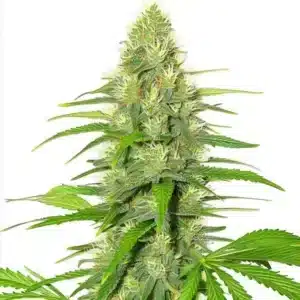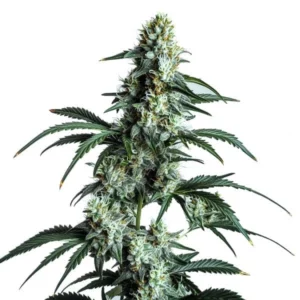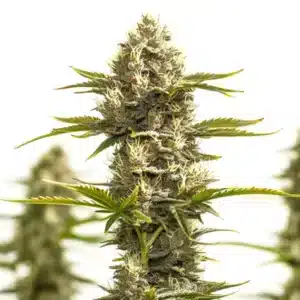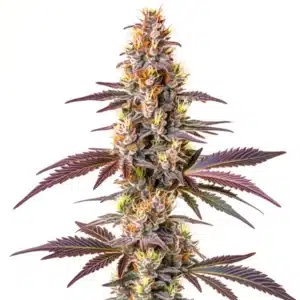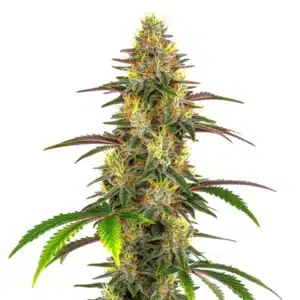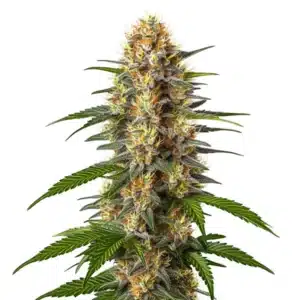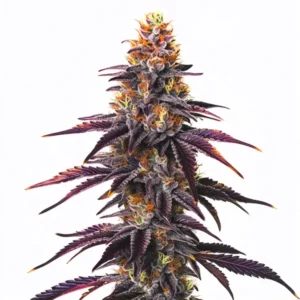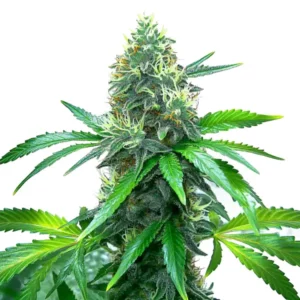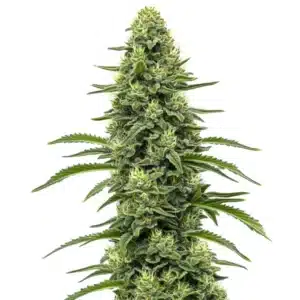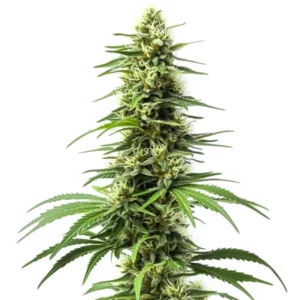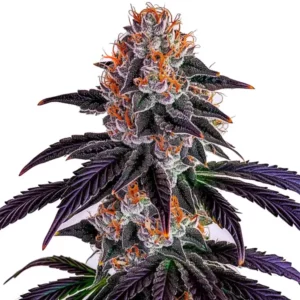
Nitrate Assimilation vs Ammonium Assimilation
Nitrate assimilation and ammonium assimilation are two crucial processes plants use to absorb nitrogen from the soil. Nitrogen is essential for plant growth, affecting everything from leaf production to crop yield. For cannabis growers, understanding nitrate assimilation vs ammonium assimilation is key, since each pathway influences plant metabolism differently and can significantly impact overall health, nutrient balance, and final harvest quality.
Plants can take up nitrogen in different forms, mainly as nitrate or ammonium. Each form has unique pathways and effects on the plant. The choice between nitrate assimilation vs ammonium assimilation depends on several factors, including soil type and plant species.
Recommended Strains
White Widow
|
|
THC | 18% - 25% (Medium) |
|
|
Type | Feminized |
|
|
Yield | High |
|
|
Phenotype | 45% Indica / 55% Sativa |
Sour Diesel
|
|
THC | 22% - 25% (Medium) |
|
|
Type | Feminized |
|
|
Yield | High |
|
|
Phenotype | 30% Indica / 70% Sativa |
Let’s dive into how each assimilation process works and what it means for your cannabis plants. Whether you’re a first-time grower or a seasoned expert, knowing the differences in nitrate assimilation and ammonium assimilation can help you choose the right nutrients and optimize your grow.
Nitrate Assimilation Explained
Nitrate assimilation involves converting nitrate to nitrite and then to ammonium within the plant. This conversion occurs in the leaves and roots. Enzymes like nitrate reductase and nitrite reductase play key roles in this biochemical pathway.
When plants use nitrate assimilation, they often grow more vigorously. This process is energy-intensive but results in lush, green foliage. For cannabis strains like Sour Diesel from Blimburn Seeds, which thrive on high nitrogen levels, nitrate assimilation can boost growth significantly.
The biochemical pathways of nitrate and ammonium assimilation highlight the complexity of these processes. Nitrate assimilation not only affects the plant’s growth but also influences its ability to handle environmental stresses. This pathway can be particularly advantageous in fluctuating climates where resilience is a necessity.
Additionally, nitrate assimilation contributes to improved leaf coloration and overall plant health. The focus on nitrate assimilation vs ammonium assimilation is crucial when considering nutrient efficiency and the long-term sustainability of plant growth. This understanding aids in creating optimized nutrient solutions tailored to specific plant needs.
Nitrate Assimilation Pathways
The nitrate assimilation pathway begins with the uptake of nitrate ions from the soil. Once inside the plant, nitrate reductase converts nitrate into nitrite. This step is crucial, as nitrite is toxic in large amounts.
Next, nitrite reductase transforms nitrite into ammonium. This conversion happens quickly to avoid damage to plant cells. Ammonium is then incorporated into amino acids, which are the building blocks for proteins.
Knowing the nitrate and ammonium assimilation pathways comparison is essential for growers aiming to optimize nitrogen use. Nitrate assimilation requires more energy but provides a steady nitrogen supply that supports long-term growth and productivity.
In contrast, the nitrate assimilation vs ammonium assimilation debate often centers around energy efficiency and growth rates. While nitrate assimilation may take more resources, its pathway supports resilience against stressors, offering a balanced approach to nutrient uptake.
Promos & Deals
Ammonium Assimilation Insights
Ammonium assimilation is simpler than nitrate assimilation. It involves directly absorbing ammonium from the soil, which is then used to create amino acids. This process requires less energy since it skips the nitrate conversion steps.
For plants grown in acidic or anaerobic soils, ammonium assimilation can be more advantageous. Cannabis strains such as White Widow from Blimburn Seeds are known to adapt well in such environments. This process can lead to faster growth under the right conditions.
The effects of nitrate assimilation over ammonium assimilation become evident in the varying growth patterns of different cannabis strains. While ammonium assimilation can accelerate growth, it requires careful regulation to prevent toxic buildup.
In nitrate vs ammonium assimilation in plants, the choice hinges on environmental conditions and desired growth outcomes. Ammonium assimilation suits rapid growth scenarios but demands precision in nutrient management to avoid the pitfalls of excess ammonium.
Ammonium Assimilation Pathways
In ammonium assimilation, the plant takes up ammonium ions directly from the soil. Once absorbed, enzymes like glutamine synthetase and glutamate synthase incorporate ammonium into organic molecules.
This incorporation happens in the roots and shoots, allowing for quick utilization of nitrogen. The plant can then channel this nitrogen into various growth processes, like leaf expansion and bud development.
The simplicity of ammonium assimilation pathways offers an energy-efficient option for nitrogen uptake. However, balancing ammonium levels is crucial to prevent the detrimental effects associated with excessive ammonium.
Comparing the nitrate and ammonium assimilation pathways, ammonium offers a rapid response to nitrogen needs, but with the caveat of potential toxicity. The nitrate assimilation vs ammonium assimilation decision should consider the plant’s specific requirements and growth environment.

Nitrate vs Ammonium: Choosing the Right Pathway
The choice between nitrate and ammonium assimilation depends on environmental factors and plant needs. Each pathway offers distinct advantages and challenges for cannabis cultivation.
Nitrate assimilation often leads to more robust growth, suitable for strains that demand high nitrogen. Ammonium assimilation, on the other hand, may be better for rapid growth in specific soil conditions. Knowing nitrate and ammonium assimilation differences can guide nutrient management strategies.
In comparing nitrate vs ammonium assimilation in plants, the selection of the pathway should align with the overall cultivation goals. For example, nitrate assimilation might be preferred for its ability to sustain growth under stress, making it ideal for long-term plant health.
The biochemical pathways of nitrate and ammonium assimilation provide insights into how each method influences plant physiology. This knowledge is essential for developing nutrient plans that maximize growth potential while minimizing environmental impact.
Comparing Biochemical Pathways
Comparing the biochemical pathways of nitrate and ammonium assimilation reveals key differences. Nitrate assimilation is energy-intensive but supports sustained growth. Ammonium assimilation is quicker but requires careful management.
The effects of nitrate assimilation over ammonium assimilation include better tolerance to environmental stresses and improved leaf color. However, ammonium can be toxic in excess, leading to root damage and stunted growth.
When assessing nitrate and ammonium assimilation pathways comparison, the focus should be on the plant’s adaptive capacity to different nitrogen forms. Nitrate assimilation offers stability, while ammonium assimilation demands vigilance to maintain healthy growth.
The nitrate assimilation vs ammonium assimilation choice impacts not just growth rates but also resistance to adverse conditions. Each pathway’s unique attributes should be considered in the context of plant species, soil composition, and cultivation goals.

FAQs on Nitrate and Ammonium Assimilation
What are the main differences between nitrate and ammonium assimilation?
Nitrate assimilation involves converting nitrate into nitrite and then ammonium, a process requiring significant energy. It often results in more vigorous growth. In contrast, ammonium assimilation skips these steps, directly incorporating ammonium into plant tissues, which is quicker and less energy-consuming.
The two pathways also differ in their environmental suitability. Nitrate assimilation is ideal for well-aerated soils, while ammonium assimilation suits acidic or waterlogged conditions. Choosing between them can influence growth speed and plant health.
In the nitrate assimilation vs ammonium assimilation debate, the distinct energy demands and environmental adaptability play crucial roles. Knowing these dynamics helps growers tailor their nutrient strategies to specific plant and soil requirements.
The nitrate and ammonium assimilation differences are not just about speed and energy but also about long-term effects on plant resilience and yield. The right choice can enhance both the efficiency and sustainability of cannabis cultivation.
How do nitrate and ammonium affect cannabis plant growth?
Nitrate assimilation generally promotes robust and sustained growth, making it ideal for strains that require high nitrogen levels. This pathway supports healthy foliage and overall plant vigor, contributing to larger yields.
Ammonium assimilation can speed up growth in the right conditions, but it needs careful monitoring. Too much ammonium can lead to toxicity, causing root damage and stunted development. Balancing these nutrients is key for optimal cannabis cultivation.
The effects of nitrate assimilation over ammonium assimilation are evident in the vigor and resilience of the plants. Nitrate provides a steady nutrient supply, while ammonium offers quick absorption, each with its own set of challenges and benefits.
Nitrate vs ammonium assimilation in plants is a key consideration for achieving desired growth outcomes. Tailoring the nutrient mix to the specific needs of the strain and environment can enhance both growth speed and plant health.
Which cannabis strains benefit most from nitrate assimilation?
Cannabis strains that thrive on high nitrogen levels, such as Sour Diesel, benefit significantly from nitrate assimilation. This process supports their need for vigorous growth and maintains lush, green foliage.
In hydroponic setups where oxygen levels are well-managed, strains like Girl Scout Cookies may also respond positively to nitrate assimilation. These environments maximize the pathway’s advantages, leading to healthy and productive plants.
Knowing the nitrate assimilation vs ammonium assimilation choice for specific strains involves recognizing the unique growth demands of each plant type. Nitrate assimilation often aligns with the needs of strains that demand robust growth and nutrient uptake.
For growers, the nitrate and ammonium assimilation differences highlight the importance of selecting the right nitrogen form to match the strain’s requirements, ensuring both optimal growth and environmental resilience.
Can I use both nitrate and ammonium in my nutrient mix?
Yes, combining nitrate and ammonium in your nutrient mix can offer balanced nutrition. This approach allows you to capitalize on the strengths of both pathways, supporting diverse plant growth needs.
However, it’s crucial to monitor nutrient levels closely. An imbalance can lead to nutrient lockout or toxicity. Tailoring the mix to your specific cannabis strain and growing environment can optimize results.
Nitrate vs ammonium assimilation in plants becomes less of a binary choice when both forms are used synergistically. This strategy can enhance growth while mitigating the risks associated with relying solely on one nitrogen form.
Nitrate and ammonium assimilation pathways comparison suggests that a balanced approach can provide comprehensive nutrient coverage, supporting both rapid and sustained growth in various environmental conditions.
What are the potential downsides of relying solely on ammonium assimilation?
Relying only on ammonium assimilation can lead to potential downsides like nutrient toxicity. Excessive ammonium can harm roots and reduce plant growth. It’s essential to regulate ammonium levels to prevent these issues.
Additionally, ammonium assimilation might not provide the same robust growth benefits as nitrate assimilation. For cannabis strains requiring substantial nitrogen, a balanced approach using both nitrate and ammonium might be more effective.
The nitrate assimilation vs ammonium assimilation debate highlights the risks of over-reliance on a single nitrogen source. Ammonium’s quick absorption can be beneficial but requires careful management to avoid negative impacts on plant health.
Comparing the biochemical pathways of nitrate and ammonium assimilation underscores the importance of a balanced nutrient strategy. This consideration ensures that plants receive the benefits of both pathways without the drawbacks of excess or deficiency.


